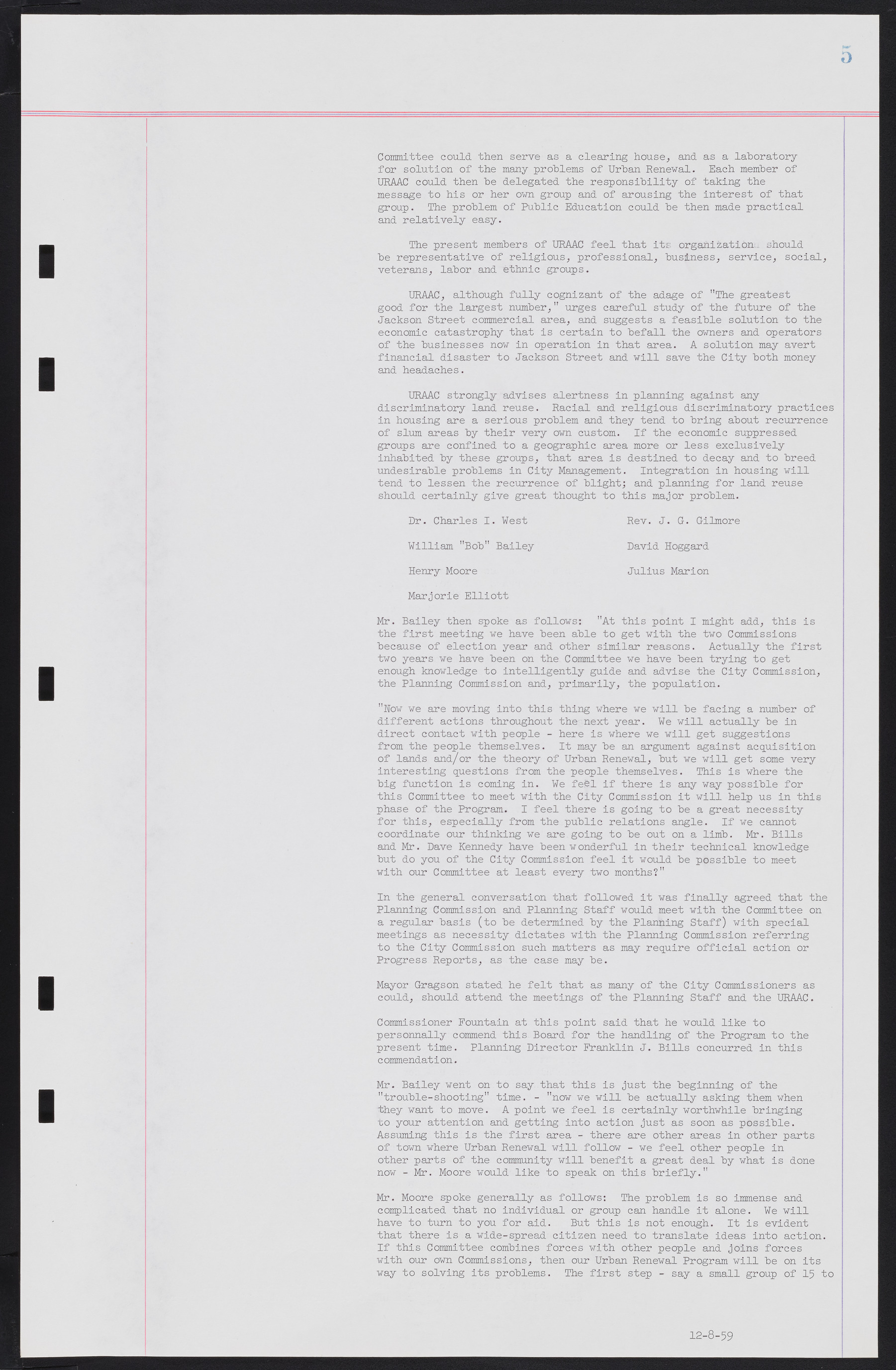Copyright & Fair-use Agreement
UNLV Special Collections provides copies of materials to facilitate private study, scholarship, or research. Material not in the public domain may be used according to fair use of copyrighted materials as defined by copyright law. Please cite us.
Please note that UNLV may not own the copyright to these materials and cannot provide permission to publish or distribute materials when UNLV is not the copyright holder. The user is solely responsible for determining the copyright status of materials and obtaining permission to use material from the copyright holder and for determining whether any permissions relating to any other rights are necessary for the intended use, and for obtaining all required permissions beyond that allowed by fair use.
Read more about our reproduction and use policy.
I agree.Information
Digital ID
Permalink
Details
More Info
Rights
Digital Provenance
Publisher
Transcription
Committee could then serve as a clearing house, and as a laboratory for solution of the many problems of Urban Renewal. Each member of URAAC could then be delegated the responsibility of taking the message to his or her own group and of arousing the interest of that group. The problem of Public Education could be then made practical and relatively easy. The present members of URAAC feel that its organization should be representative of religious, professional, business, service, social, veterans, labor and ethnic groups. URAAC, although fully cognizant of the adage of "The greatest good for the largest number," urges careful study of the future of the Jackson Street commercial area, and suggests a feasible solution to the economic catastrophe that is certain to befall the owners and operators of the businesses now in operation in that area. A solution may avert financial disaster to Jackson Street and will save the City both money and headaches. URAAC strongly advises alertness in planning against any discriminatory land reuse. Racial and religious discriminatory practices in housing are a serious problem and they tend to bring about recurrence of slum areas by their very own custom. If the economic suppressed groups are confined to a geographic area more or less exclusively inhabited by these groups, that area is destined to decay and to breed undesirable problems in City Management. Integration in housing will tend to lessen the recurrence of blight; and planning for land reuse should certainly give great thought to this major problem. Dr. Charles I. West Rev. J. G. Gilmore William "Bob" Bailey David Hoggard Henry Moore Julius Marion Marjorie Elliott Mr. Bailey then spoke as follows: "At this point I might add, this is the first meeting we have been able to get with the two Commissions because of election year and other similar reasons. Actually the first two years we have been on the Committee we have been trying to get enough knowledge to intelligently guide and advise the City Commission, the Planning Commission and, primarily, the population. "Now we are moving into this thing where we will be facing a number of different actions throughout the next year. We will actually be in direct contact with people - here is where we will get suggestions from the people themselves. It may be an argument against acquisition of lands and/or the theory of Urban Renewal, but we will get some very interesting questions from the people themselves. This is where the big function is coming in. We feel if there is any way possible for this Committee to meet with the City Commission it will help us in this phase of the Program. I feel there is going to be a great necessity for this, especially from the public relations angle. If we cannot coordinate our thinking we are going to be out on a limb. Mr. Bills and Mr. Dave Kennedy have been wonderful in their technical knowledge but do you of the City Commission feel it would be possible to meet with our Committee at least every two months?" In the general conversation that followed it was finally agreed that the Planning Commission and Planning Staff would meet with the Committee on a regular basis (to be determined by the Planning Staff) with special meetings as necessity dictates with the Planning Commission referring to the City Commission such matters as may require official action or Progress Reports, as the case may be. Mayor Gragson stated he felt that as many of the City Commissioners as could, should attend the meetings of the Planning Staff and the URAAC. Commissioner Fountain at this point said that he would like to personally commend this Board for the handling of the Program to the present time. Planning Director Franklin J. Bills concurred in this commendation. Mr. Bailey went on to say that this is just the beginning of the "trouble-shooting" time. - "now we will be actually asking them when they want to move. A point we feel is certainly worthwhile bringing to your attention and getting into action just as soon as possible. Assuming this is the first area - there are other areas in other parts of town where Urban Renewal will follow - we feel other people in other parts of the community will benefit a great deal by what is done now - Mr. Moore would like to speak on this briefly." Mr. Moore spoke generally as follows: The problem is so immense and complicated that no individual or group can handle it alone. We will have to turn to you for aid. But this is not enough. It is evident that there is a wide-spread citizen need to translate ideas into action. If this Committee combines forces with other people and joins forces with our own Commissions, then our Urban Renewal Program will be on its way to solving its problems. The first step - say a small group of 15 to 12-8-59

